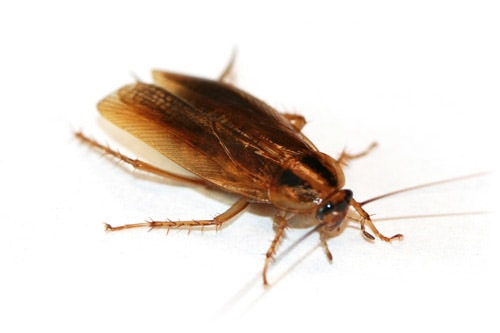
Got some uninvited dinner guests? Is the back of your fridge home to a colony of creepy crawlies? If you find your building crawling with cockroaches, you’re in the right place.
Discovering there are cockroaches in your home or business is distressing and, due to their lifecycle, can be an uphill battle to control.
Whether you’re thinking about doing some DIY cockroach pest control or you’re looking to enlist the help of a professional pest management company, this guide is for you.
Cockroaches (otherwise known as ‘roaches’) are common insects, with around 4,600 species worldwide. About 30 cockroach species are associated with human habitats and five of those are well known as pests.
Two of the most common types of cockroach pest in the Ireland are the Oriental cockroach (Blatta orientalis) and the German cockroach (Blattella germanica).

Cockroaches pose a direct health risk to humans. They are vectors of disease, known to carry the organisms which cause food poisoning in humans and many other bacteria, such as salmonella, staphylococcus and streptococcus.
Cockroaches move from sewers, drains into buildings and human habitats. This means that when they’re in your building, foraging for food and water, they will contaminate anything they come into contact with; food, utensils, and preparation surfaces.
They disgorge portions of their partially digested food at intervals and drop faeces along the way.
Nothing can ruin the reputation of a business faster than news of a cockroach infestation.
All businesses are at risk, but industries handling food and drink, and operating within highly regulated environments, may face a greater danger from exposure to cockroaches.
If clients and customers spot evidence of a cockroach infestation on the premises you manage, they are likely to complain and request a refund.
Negative reviews of businesses or products are easily shared and viewed online, particularly on social media.
And aside from the reputational costs, there are also fines for businesses found to have a pest problem. These usually come at a significant expense and repeat offenders are in danger of facing legal action.
Environmental Health Officers can issue enforcement notices to business owners who don’t have adequate pest management procedures in place.

Generally, as a rule, cockroaches don’t like our British weather (who does?) so they do live within buildings.
Oriental cockroaches are much hardier than the German and, in the summer months, you may even see them outdoors around bin areas where they forage. However, this is very uncommon.
The German cockroach favours higher temperatures and humidities, with a common nickname for it being the “steam fly”.
You’re likely to find them behind appliances where you have warm motors, such as your oven or fridge.
Oriental cockroaches will thrive in cool, damp areas such as basements and drains.
Both these species of cockroach can often be found around the heating ducts and boiler rooms of large, centrally heated buildings.
You should also look for cockroaches around pipes, stoves, and sinks, especially in humid areas like bathrooms and around laundry appliances.
Areas with food, water and dark spaces to hide are ideal environments for cockroaches to live.

Although the obvious sign of a cockroach infestation is spotting a live one, cockroaches are nocturnal, so it’s unlikely you’ll see them during the day. Instead, you’ll need to check for signs of their presence.
These can include:

Here are a few prevention tips for securing your property:

Control of cockroaches is seldom easy because of the difficulty in getting the insecticide to the insect.
Cockroaches are hard-wired to survive. They are adaptable, highly mobile and their lifecycle makes cockroach control an uphill task for the untrained individual.